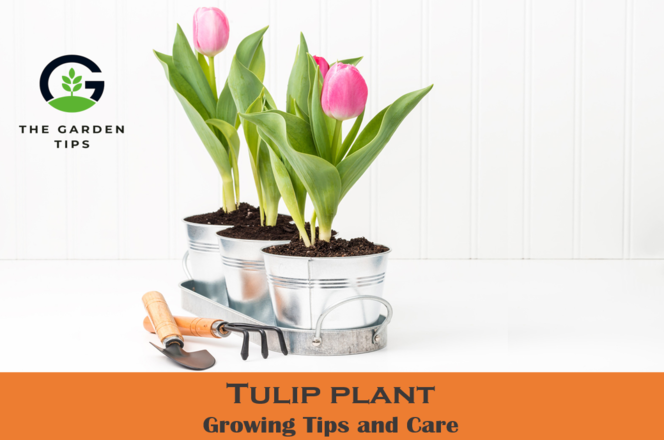The rattlesnake plant is an exciting and beautiful houseplant that is easy to care for. It has long, cascading leaves with a unique pattern that resembles a rattlesnake’s skin. It can be a great way to add a touch of exotic to your home.
But do you know how to care for a Rattlesnake plant at home? It may be easy to raise a plant, but it still needs care in general growth and while plant propagation. Here is the ultimate guide which can make you an expert in caring for this beautiful plant.

Rattlesnake Plant Care
Caring for a rattlesnake plant is relatively easy, and you can do this with just a few steps. This article contains complete basics of how to care for a rattlesnake plant, including proper watering, lighting, repotting, and pruning. With some knowledge and tender care, you can enjoy this beautiful houseplant for years.
Complete Growing Guide of Rattlesnake Plant
| Botanical Name: | Goeppertia insignis, formerly Calathea lancifolia |
| Plant Type: | Perennial |
| Hardiness zone: | 11b-12b (USDA) |
| Native: | South America |
| Varieties: | Corona (Hardiness zone 9b and 10a USDA), Eclipse (Hardiness zone 4 through 9 USDA), Zebra Plant (Hardiness zone 11&12 USDA, Pinstripe Plant (Hardiness zone 10b to 12 USDA) |
| Soil types: | Moist but well drained |
| Soil pH: | Acidic, neutral |
| Water: | Keep the soil moist but not saturated. Water your Calathea rattlesnake more frequently during spring and summer. |
| Sun Exposure: | Partial |
| Temperature requirement: | 65 degrees F to 85 degrees F |
| Humidity: | Ample humidity, lukewarm water misting |
| Plant Mature Size: | 9-20 in. tall, 9-18 in. wide |
| Flower Color: | Yellow |
| Bloom Time: | Spring and Summer |
| Bloom Duration: | Up to two months |
| Blooms in a year: | Two times, in the late spring and early summer. |
| Pests: | It is pest-free; if you see any pests spray horticulture oil to get rid of them. |
| Diseases: | Spider mites, burning and browning along leaf edges, root rot. |
| Fertilizer requirement: | Its NPK ratio is 10-N, 10-P, 5-K |
| Toxicity: | Non-toxic for cats and dogs. It is non-poisonous, but keeping it away from pets and children is better. |
| Usage: | In Brazil, people use it for food wrapping and handicrafts. |
| Repellent Characteristics: | Bitter foliage and roots |
How Can You Repot Rattlesnake Plant?
You can repot a rattlesnake plant by leaf cutting by the following method.
- Cut two mature leaves with a stem, ensure at least two leaves, and cut them from the base.
- Fill a new pot with soil and insert the stem and leaves.
- Keep the temperature 73 degrees F, and place a plastic bag on top of the cuttings.
- Give the plant fresh air for daily 10 to 20 minutes. Also, keep the pot moist evenly and prevent drying out.
Care Tips for Rattlesnake Plant
There are some factors that you can look out for to take care of your rattlesnake plant. Follow these steps and guidelines to ensure your rattlesnake plant is growing fine;
Best Soil
- The soil must be well drained; rattlesnake plants do not like to hold water but like to maintain moisture.
- Use a light sandy soil or potting mix that contains peat moss and perlite.
Light
- Try to use filtered light; you can keep the plant near the window to filter the light.
- If the light is too bright, you can use drapes; if the spot is bright and well-lit, it is the best option for the rattlesnake plant.
Temperature
- Keep the temperature between 65 degrees F to 85 degrees F.
- Ensure to keep them in highly humid temperatures.
Water
- Water the plant more frequently in summer as its growth increases.
- Frequent small watering now and then is perfect for its growth.
Pest
- Treat your plant with horticulture oil sprays every week if you notice pests like aphids, spider mites, or mealybugs.
- You can also get rid of the pests by frequently boosting the humidity by spraying water.
Diseases
- Rattlesnake plants might get spider mites, mealybugs, and aphid diseases.
- You may also notice browning along edges or root rotting. Use horticulture oil and frequent moisture to get rid of these diseases.
Fertilizers
- Feed your rattlesnake plant after every four weeks during spring and summer.
- The fertilizer should be rich in iron, and the NPK ratio must be 10-N, 10-P, and 5-K.
FAQs
Can You Prune a Rattlesnake Plant?
Pruning is unnecessary, but if you see any unwanted leaves near the stem, you can discard them with the help of sterilized shears.
Why Do Rattlesnake Plants Close Up at Night?
Some rattlesnake plants point upward at night and then drop back down in the daytime. That is why they are also known as rattlesnake prayer plants; this movement is normal for the plants to manage their water and light resources.
Conclusion
That’s all about Rattlesnake plant care and repotting. To sum it all up, knowing how to care for a Rattlesnake plant is imperative for its successful growth and propagation. It requires well-drained soil, filtered light, and frequent water during summer to grow well. I hope this guide has given you enough information on Rattlesnake plant care. Keep visiting us for more stuff related to gardening and lawn care.







